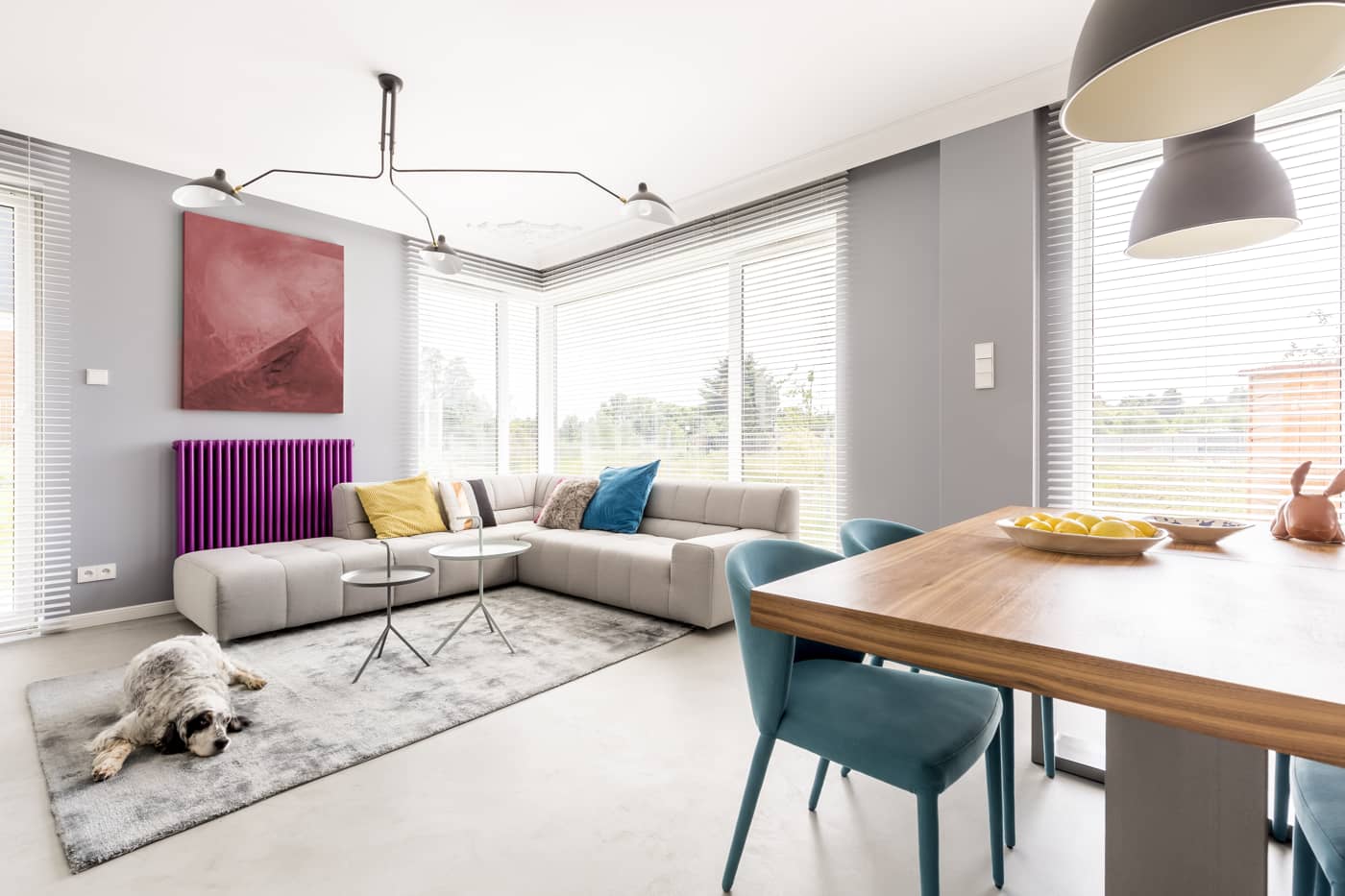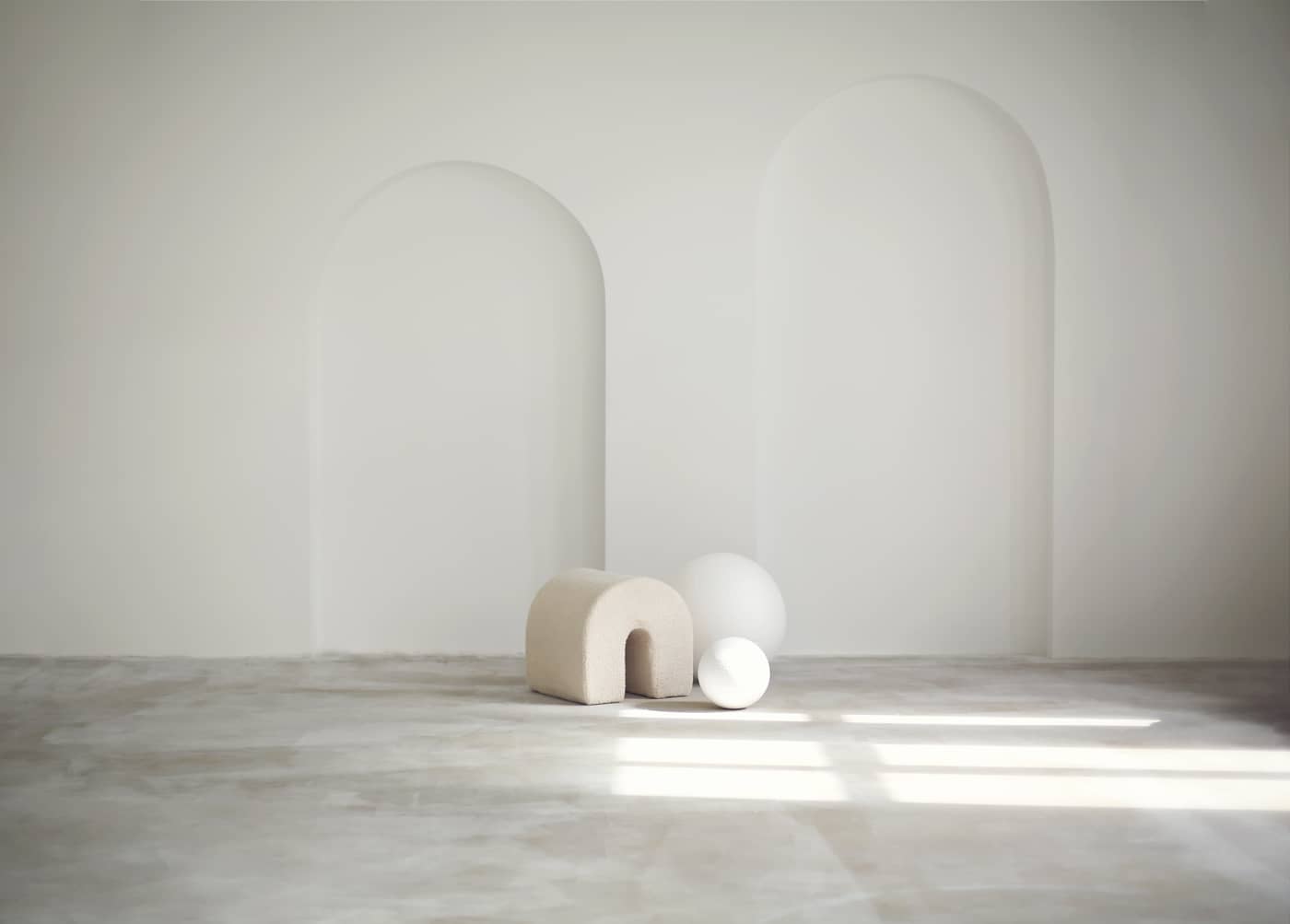Microcement problems: the most common and how to avoid them
Although we are dealing with a continuous coating of the highest quality, as with all materials in the construction sector, problems may arise. These usually appear for various reasons such as those we are going to explain throughout this news and which usually come from skipping the basic rules or precepts and that, by doing so and ignoring them cracks, fissures or crevices may appear.
The lack of support repair, skipping steps in the application process, or directly not having professionals when applying it can lead to the appearance of marks and stains. We are going to analyze all the factors that can lead to not obtaining the expected results, both in a new construction and in a renovation.
What is microcement?
The microcementit is a continuous decorative coating, without expansion joints, so it is very difficult to crack and does not crack over time, unless its application is not done as it should be done.
It is a very thin coating, with a thickness of only 3 millimeters, which allows it to adapt perfectly to both horizontal and vertical surfaces, especially respecting, due to its lightness, the structural loads.
Continuing with its technical or constructive qualities, microcement has great resistance to a multitude of things such as abrasion, traffic, impacts, exposure to UV rays, contact with water or humidity, and scratches, among others.
On the other hand, we are also dealing with a coating full of decorative qualities, available in a large number of colors, exceeding 100 shades to choose from, very adaptable to any decorative style. thanks to the number of different finishes that can be achieved through the application of professionals. In fact, these are capable of achieving contrasts and nuances that would be impossible with other materials.
As you can see, microcement is a very complete material that is capable of contributing all its attributes to any type of space, whether it is indoors or outdoors. In either of these places, it is capable of withstanding any type of threat and improving the quality of life for the users of these places.
In the end, we have a continuous material capable of generating infinite surfaces that increase the brightness of the rooms, which is very important in those that are smaller in size and also insulates from moisture and from cold and heat.

Features of microcement
In recent years, microcement has become one of the most popular construction coatings, due to all the features it possesses.
Next, we list them so you can easily see all the benefits of a material like this.
Resistance: Microcement is very resistant and durable. It has been proven to be resistant to moisture, temperature changes, and impacts. to dirt and the passage of people and vehicles, regardless of the frequency or weight it has to bear.
Flexibility: Due to its composition, microcement is very flexible. This means that it can be applied on already existing surfaces such as tiles, plasterboard, tiles, marble or plaster without having to carry out works. Stairs, walls, floors, swimming pools, terraces, countertops or shelves, among others, can be coated with this material.
Aesthetics: Microcement is a very aesthetic coating. Its smooth and uniform surface gives it a modern and elegant look. In addition, microcement can be tinted in any color, which allows it to adapt to any type of decoration.
Ease of maintenance: Microcement is very easy to maintain. Its smooth and uniform surface facilitates cleaning and, by applying its corresponding sealer from time to time, the surfaces look like new. Installation: Microcement is very easy to install and does not require special tools to apply it.
Price: Microcement is a relatively economical coating, given all the qualities it has. However, application budgets can vary greatly, depending on certain factors such as the size of the area to be applied, whether it needs to be repaired, the experience of the applicators, or the difficulty of the application itself.

Mistakes to avoid in the application of microcement
As we said before, to apply microcement, there are some very established phases that, if carried out, guarantee the successful completion of any project. On the contrary, if these are not taken seriously or overlooked, they can be definitive. In fact, there are three key steps that must be respected no matter what, such as the preliminary and the repair of the support, the application of the primer and the sealing. By having professional applicators, the strict compliance with the process is guaranteed in an optimal way. Anyway, we are going to describe the mistakes that are most often made.
1. Applying microcement at the wrong temperature
Both from above and below, that is, whether the ambient temperature is too high or too low, the application of microcement will not be successful and problems will arise later on.
In fact, microcement should be applied between 15ºC and 25ºC. Indeed, if the temperatures are lower than recommended, as can happen in winter, its curing process may be delayed, with total certainty. However, at excessively high temperatures, the microcement tends to harden at full speed, without respecting the ideal times.
2. Mixing the microcement pigment poorly
The mixing of microcement is a very important action since if it is not done correctly, lumps can appear massively. These will cause dark streaks that will prevent the desired color from looking normal on any surface.

Considering that we have a large catalog of shades, from Topciment we recommend respecting the corresponding dosage for each color, both for its quantity and for the type of microcement since the proportions will depend on both.
In addition, in the process of microcement pigmentation, it is very important to achieve a homogeneous mass, in which there is an absence of irregularities and, for this, it is very important to stir the mixture between the kneaded liquid and the pigment very well. Finally, to carry out this process correctly, you have to gradually add the microcement and the liquid and continue stirring until the achieved viscosity is ideal, obtaining a coating with a homogeneous color.
Not respecting the installation steps of the microcement
And, of course, the application process. During this, we will find nuances that, if not followed, the result, at aesthetic and constructive levels, will not be anywhere near expected. It should also be taken into account that it will depend on whether the surface is vertical or horizontal. In fact, this is because the type of microcement used in each one is different.
On the other hand, it is also very important to condition and level the base or the support on which it is going to be applied. This can lead to the appearance of irregularities in the future, which may need to be repaired or, even, change the entire surface again.
The step in which the surface is printed must be fulfilled and must be done optimally. The same in the sealing, step in which the varnish or sealant is applied that will serve to protect the surface from future threats.
Yes, anyway, if you want to better understand the application processes, depending on the surface, you can visit this page.

Overlook the dampness before applying
Humidity tends to be one of the toughest threats to any surface. Thus, they arise easily in the lower and exterior areas of homes and/or businesses or companies and in slabs or other areas covered with concrete that have not been properly isolated.
To avoid the latter, one must worry about priming the support correctly because if not, the moisture will come out of the structure, manifesting itself on the wall, pillar or column. This should always be done before applying the mortar to the area to be coated.
Another aspect of priming to take into account is choosing the correct primer product as making a mistake in the choice can lead to subsequent problems on our microcement surface. At Topciment we have Primapox® 100 Barrier which thanks to being composed of epoxy, neutralizes any type of moisture by capillarity.
Sealing the microcement with an inadequate sealer
The last step of a microcement application process is sealing, as this product is the one that will protect the surface and give it that waterproof and non-slip condition. When choosing a sealer or varnish or another, it is necessary to take into account the microcement that is applied since there are different types of varnishes created ad hoc for the corresponding mortar. It is essential not to make a mistake when choosing.
Incorrect repair of a microcement area
Microcement is a construction material that can be repaired when an imperfection appears, which usually comes from some kind of error like the ones we have analyzed before.
These irregularities, such as, for example, chipping due to the use of a coating or quality material, must be repaired. When restoring these areas, care must be taken to make them as large as possible so that there is not much difference with the rest of the coating and the contrast is not too exaggerated and breaks the aesthetic balance with the rest of the surface.

Fissures and cracks in microcement
Although microcement is a coating of great hardness and resistance, there are times when, despite not having joints (which facilitates its ideal conservation by contracting or expanding less), cracks or fissures can appear on its surfaces, mainly for the three reasons we detail below.
1. Poor quality microcement fissures
If you want to achieve the best results, you should use the highest possible quality materials. Therefore, if you want to cover a surface with microcement, make sure it is Topciment and you will guarantee the achievement of areas where it is applied will resist cracking and you will get an area with great technical and aesthetic conditions.
2. Cracks when filling expansion joints
Just because microcement is a coating that does not require expansion joints and has great adhesion and versatility to adapt to any type of material or surface, does not mean that it can be applied with other materials that have joints, such as a concrete slab. When applying it over an area of these characteristics, these must be respected and not attempt to create a continuous surface as the microcement could later crack.
3. Cracks in the microcement due to poor surface condition
When the base on which the microcement is to be applied is not in good condition, it must be repaired. If it is not done, the appearance of cracks or fissures is 100% certain. Professional applicators will know which points and how these should be repaired so that the result is optimal and the desired finishes remain in perfect condition.
4. Fissures and cracks microcement over parquet
Microcement is not a very suitable coating to apply on a material like parquet. Why? Well, because it, being made of wood, is very sensitive to moisture, which causes the base, which would be the parquet to contract or expand and this ends up affecting the microcement, causing the appearance of cracks.
It should also be known that parquet is not a surface that has great stability, due to its movable joints, and when applying the fiberglass mesh, fundamental in the application of microcement, it could break. This would lead to the breaking of the mesh and the subsequent appearance of cracks.
Subscribe to our newsletter
Receive in your email tips for the application and care of microcement, the latest trends and news from Topciment products.




